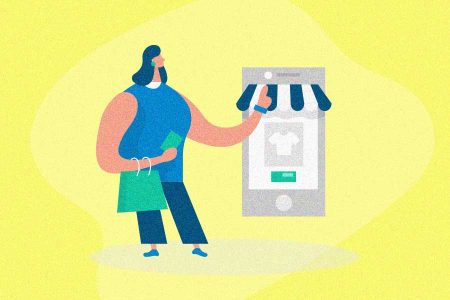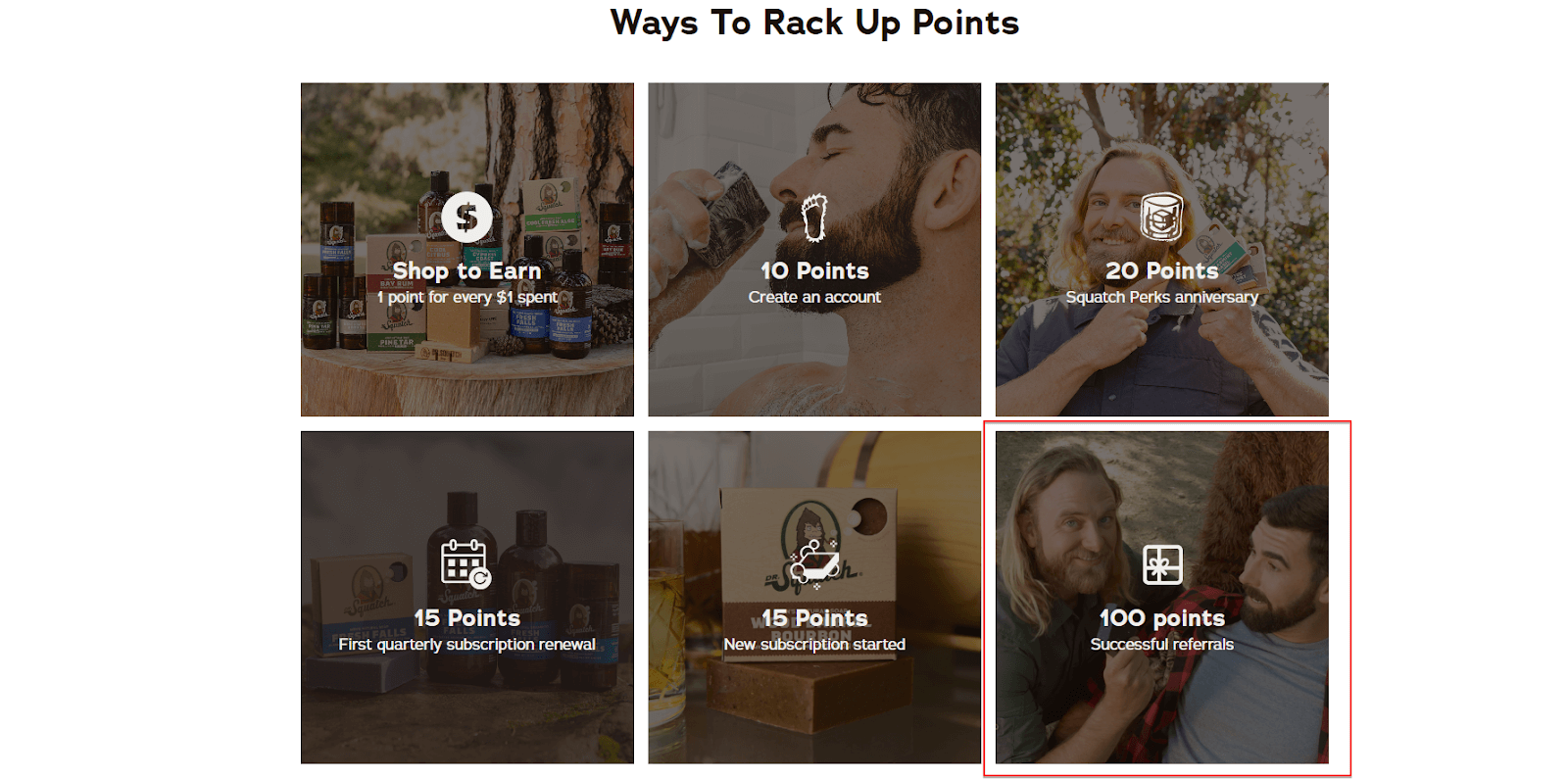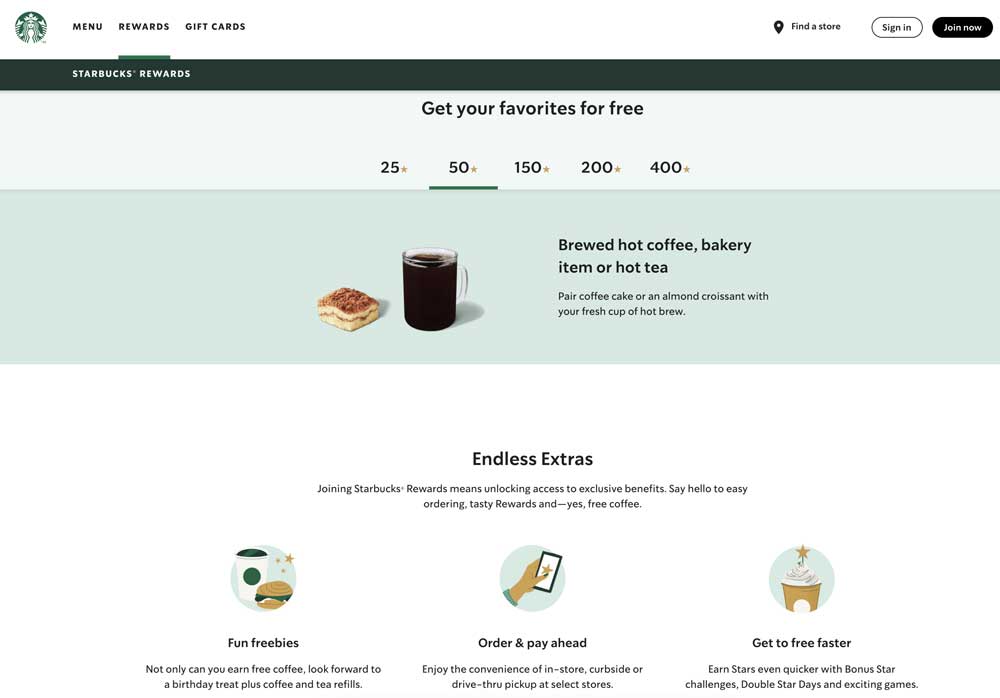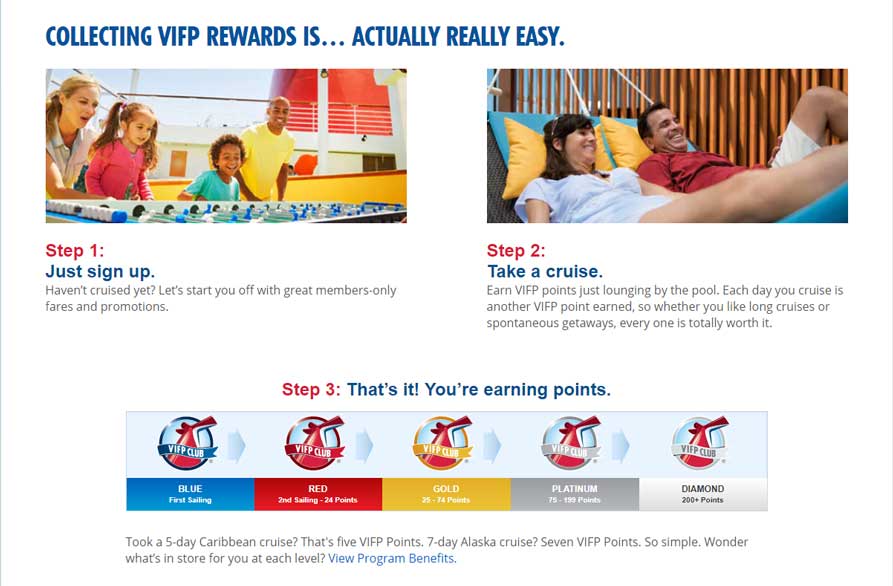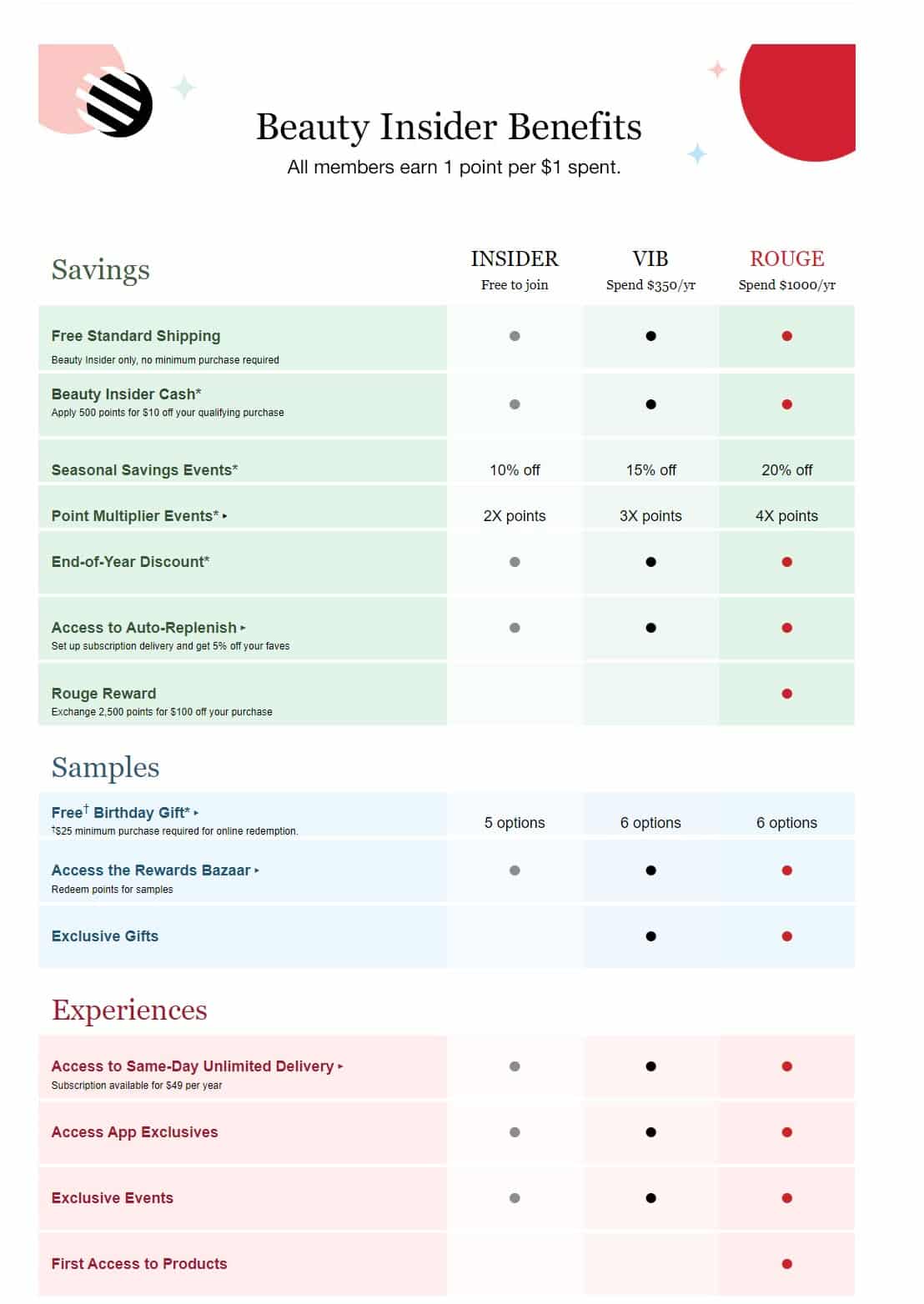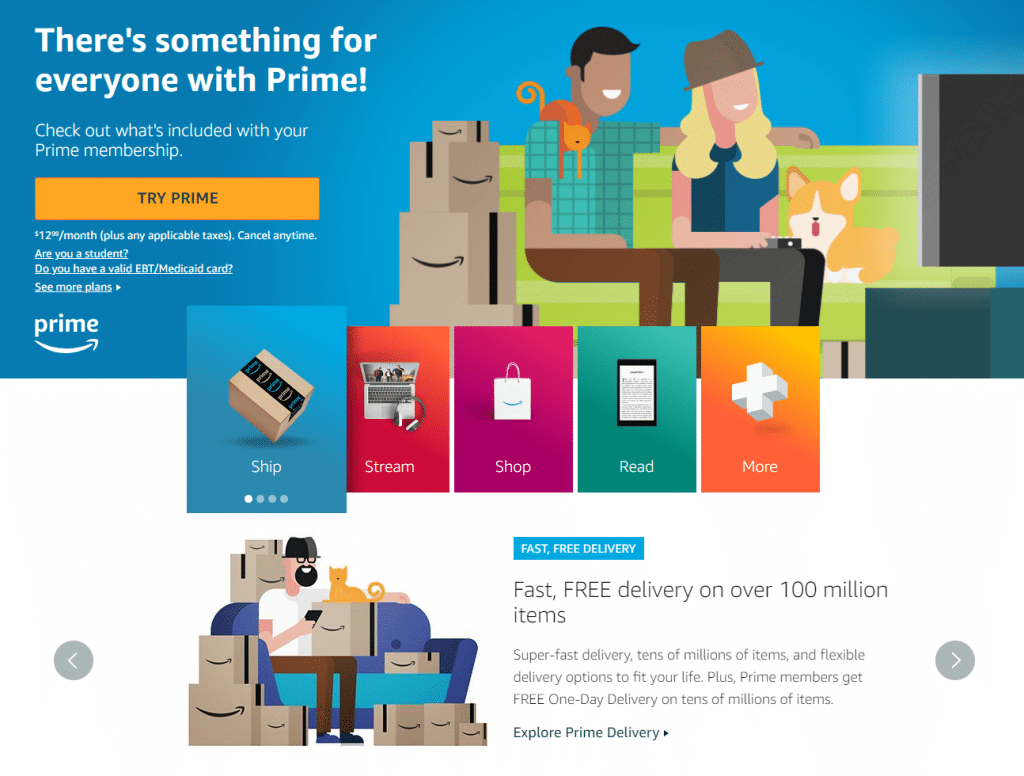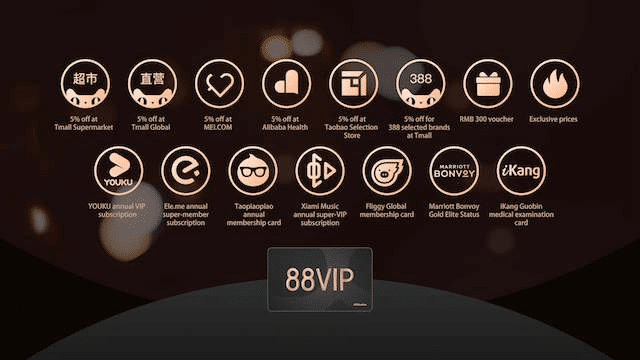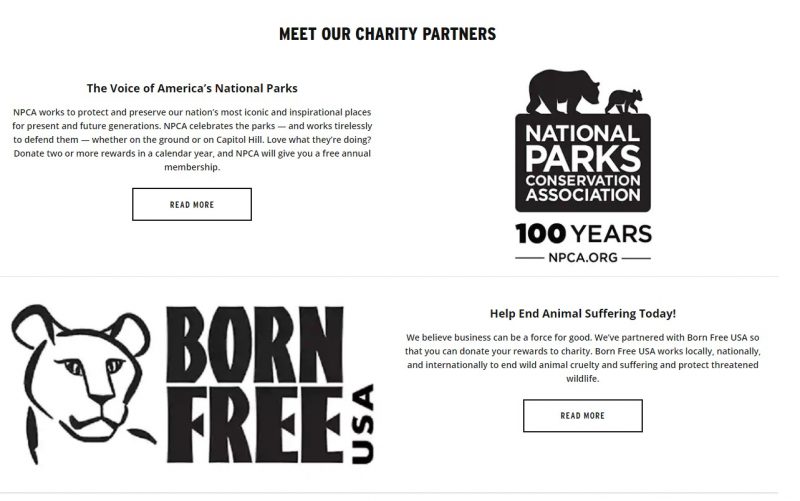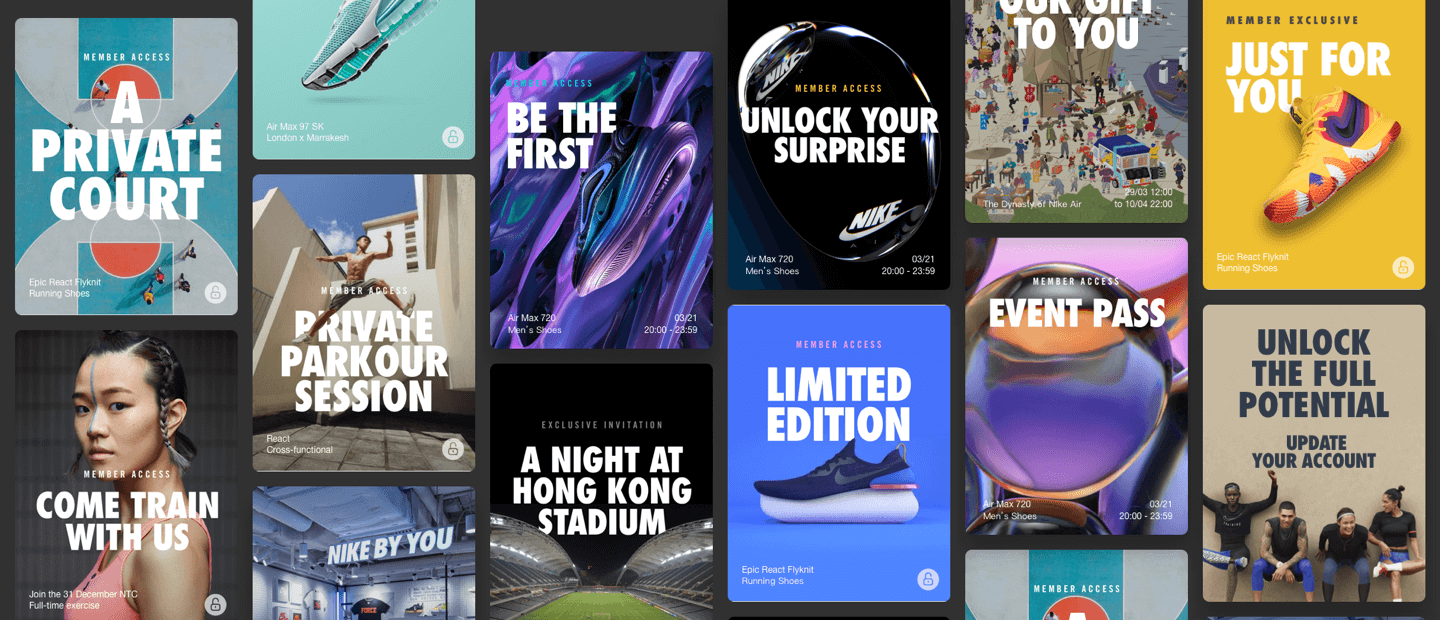Humans are social creatures, and your average ecommerce customer isn’t any different. While they’re shopping for products, they’re also looking to build meaningful relationships with brands they can trust and identify with. At the same time, they also expect something in return for opening their minds, hearts and wallets to your business.
And that’s where loyalty programs come in. Implementing a loyalty program is a proven marketing (and relationship-building!) strategy that can help you convert your prospects and one-time purchasers to devoted fans. Customers will keep buying simply because they love how you reward them for how much they spend with you.
Picture this:
- 81% of respondents in a KPMG survey said that being a member of a customer loyalty program encouraged them to spend more with a company. At the same time, 78% would switch over to another company if they provided better benefits.
- 70% of respondents from the Bond & Visa’s 2018 global loyalty survey say they are more likely to recommend brands with a good loyalty program.
- Incorporating personalized communications and online rewards as part of a loyalty program has the potential to achieve a 319% increase in total average order quantity and a 665% increase in monthly revenue, based on a case study by Incentive Solutions.
The bottom line: A loyalty program can help boost your revenue through increased sales and word-of-mouth marketing. But to ensure its success, it’s important to factor in other variables such as competitive benefits and personalization.
Want to overcome the ambiguity and get clear on what you really need to build an effective ecommerce loyalty program? We’ll cover everything you need to know next.
What are ecommerce loyalty programs?
An ecommerce loyalty program is a formalized program designed by an ecommerce business to nurture existing customers, so they’re:
- Making repeat purchases throughout their time with the business, contributing to increased revenue.
- Not feeling compelled to look at competitor brands because of how well the business caters to them through targeted benefits, incentives, and exclusive perks. This helps reduce churn and boosts retention rates.
- Constantly engaging with the brand one way or the other, providing the business ample marketing intelligence to continually enhance their ROI. This engagement may be in the form of feedback, reviews, polls, social shares, and user-generated content (UGC).
It’s common for businesses to use customer loyalty software to help administer, manage, and run ecommerce loyalty programs, given the large array of moving parts involved.
Aside from the actual delivery and redemption of rewards, you’ll also need workflow management tools, content marketing support, and analytics, to get the biggest bang out of your loyalty program.
Why are ecommerce loyalty programs important?
Ecommerce loyalty programs are important because they drive repeat business. Here’s why you want to dedicate strategies for increasing repeat business (in addition to acquiring new customers):
- 41% of an ecommerce store’s revenue is created by only 8% of its customers, and 35% is generated by your top 5% of customers.
- The probability of selling to an existing customer is 60-70%, while the probability of selling to a new customer is 5% to 20%.
- Increasing retention rates by as little as 5%, has the potential to increase profits anywhere from 25% to 95%. Customer retention takes place when a customer goes on to make repeat purchases from you — in other words, you’ve retained that customer.
In addition, here’s why Bain & Company says loyalty programs are so important:
- Don’t expect to break even on one-time shoppers — The average online shopper isn’t profitable for a retailer unless they’ve shopped at least four more times at the same online store.
- Repeat customers spend more and generate larger (i.e. more profitable) transactions — In apparel, for example, the average repeat customer spent 67% more in months 31-36 of their shopping relationship than in months zero to six.
- Repeat customers refer more people and bring in more business — As a case example, in consumer electronics, initial referrals were just over four, while total referrals after ten purchases were 13. Over a period of three years, referred customers would go on to spend over 50% more than what the original shopper spent.
Loyalty programs and customer lifetime value
Repeat customers are also critical to increasing your customer lifetime value (CLV), which is the average of the revenue generated by your customer during the duration of their transactional relationship with you.
CLV = Average Transaction Size x Number of Transactions x Retention Period
Loyalty programs can have a significant impact on boosting repeat business because they go above and beyond a one-time transaction. Through constant engagement, motivation, and rewarding, they seek to strengthen the relationship with the end user, build emotional bonds, and foster long-term customer loyalty. This means you’ll be able to retain your customers for longer.
Let’s connect the dots between retention and brand loyalty programs:
- Over half (53%) of consumers admit that discounts and loyalty points make them stay with a brand for longer.
- 80% of participants in the Loyalty Report 2021 say ecommerce loyalty programs “make me more likely to continue doing business with brands”
- 60% of participants of the same survey were to do business with the brand, if they could become a member of a higher tier (i.e., next level with higher rewards, bigger discounts, and sometimes early access or exclusive access to new products) in the loyalty program.
Benefits of ecommerce loyalty programs
Implementing a loyalty program can do wonders for your ecommerce business in several different ways:
● Promotes customer retention: We talked earlier about how customer loyalty can be linked to increased customer retention, which translates to repeat purchasing.
● Encourages stronger customer relationships: Loyalty programs are an exercise in continuous engagement and relationship building. Customers are more likely to stay with brands who are happy to reward them for the purchases they make, either through reduced pricing or more value on the purchase.
● Leads to higher profits: A no-brainer – repeat purchases can add to the bottom line. It also makes a lot of sense when we consider the average customer lifetime value or CLV coming next.
● Boosts average customer lifetime value The average customer lifetime value is the total net profit a company can expect to generate from a customer throughout their entire relationship. It factors elements such as the customer’s very first purchase with your brand, repeat purchases, and how long they’ve been with your company. In other words, building loyalty can lead to increased profitability.
● Lowers your marketing costs — Acquiring a new customer can cost five times more than retaining an existing customer.
● Increases brand recognition and recall — Loyalty programs where you’re constantly engaging with consumers through all the possible touchpoints in the customer journey can help keep the brand top of mind for your customers. You want to be the first brand they think of when they want to buy a specific product.
Factors driving customer loyalty in ecommerce
To extract the maximum value from a loyalty program for ecommerce brands, it’s vital to understand the factors that attract customer loyalty and the ones that repel it. In doing so, you will better understand the actions you should be spending more of your time and resources on.
Customer loyalty is driven primarily by the following key factors:
Getting product development right
Products boost customer loyalty when they provide quality and value at an optimal price in comparison with competitor products.
The key to product development has always been understanding the pulse of what customers want, overdelivering on the promise, and marketing the value as attractively and engagingly as possible. At the same time, the product has to be sold at a price point that customers are willing to pay. Market research to test product viability will be key.
The popularity of products can also be tied back to the perceived brand value and reputation in the market. What do people think about your company?
Maintaining brand reputation
Brand reputation encompasses several different factors, most of which have nothing to do with marketing messaging. Online consumers are less likely to believe direct business-to-consumer advertising over the experience of others in the same consumer segment. That’s why walking the talk is critical.
- Does your product deliver what it promises to do?
- Do the reviews online from existing customers back up your claims?
- How does your customer service department treat people with questions, concerns, or complaints? Do your customers feel like you have their back?
Nurturing relationships with your customers
How often do you check in with your customers outside of the purely transactional buyer-seller relationship? Do you share free resources or quality content regularly that speaks to the problems and pain points of your customers and how they can manage their life better, save time, or increase their productivity/wealth in connection with your product?
How do you show your biggest and most frequent spenders that you value their loyalty? There is a rising trend towards consumers wanting to frequent brands with similar values. For example, what’s your position on ethical sourcing, being eco-friendly, and promoting diversity, equity, and inclusion?
Creating content that’s relevant
Personalization is no longer an option. It’s a necessity, given the plethora of marketing software and tools currently available in the market. Something as simple as referring to your customer by name can go a long way toward building customer loyalty.
However, customers do expect a lot more these days, such as the ecommerce brand providing personalized recommendation feeds. In an online survey carried out by Epsilon, 80% of respondents indicated they are more likely to do business with a company if it offers personalized experiences.
Making purchases convenient and easy
Another major factor toward driving customer loyalty is the ease of doing business with you.
With ecommerce businesses, this often translates to an easy-to-use platform and interface (think the ability to filter and find specific products, select options, easy checkout processes), the availability of chat support 24/7, quick problem resolution, large product selection, flexible payment options, fast shipping, to mention a few of the most important aspects.
Challenges in building customer loyalty
On the flip side, ecommerce businesses have some unique challenges to deal with when it comes to building or developing customer loyalty.
Market saturation: The ecommerce industry can be highly competitive. Unique products can easily be replicated and “matched” by new entrants. It can be challenging (but not impossible) to stay on top of market trends. Building a strong brand and continuously monitoring competitor activity and current buyer behaviors can help offset this challenge to a large degree.
Consumer fickleness: The large number of competitors in the online space makes it easy for consumers to switch loyalties when they find a product at a great price (in conjunction with an attractive loyalty program). Businesses need to continuously innovate to maintain brand loyalty and prevent churn – in terms of what’s on offer, as well as the relationship-building aspect.
Costs of customer acquisition: It costs more to acquire a new customer than it does to retain an existing one. Plus – loyal customers tend to make repeat purchases, adding more to the bottom line over time. The use of creative strategies like customer/peer-driven referral programs can help to reduce the costs associated with new customer acquisition.
Data collection: Customer loyalty can feel like an amorphous concept to measure and analyze. But loyalty program software can help you analyze consumer preferences, shopping trends, and roadblocks on the customer journey.
Designing successful loyalty programs: While the prospect of designing a successful loyalty program can seem daunting, a little bit of planning and using the right tools can make the process a lot easier. Carry out surveys with your existing customers to get insights into what they would want in a loyalty program to help flesh things out.
Types of ecommerce loyalty programs
There are a few basic types of loyalty programs to choose from depending on the nature of your business and your customer preferences:
Points programs
Point-based loyalty programs involve assigning points to customers based on the actions they take (typically purchases), which the customers can redeem for rewards at a later point in time. It’s a very common style of rewards program that’s been in use for decades.
Starbucks provides reward points called “stars’ in combination with a tiered program structure (explainer coming up next). Customers earn two stars per dollar spent at participating locations using their gift card or via their mobile app. They can then redeem these points for freebies. For example, 50 stars can get you a free brewed hot coffee, tea, or a pastry like a bagel or croissant.
Ecommerce brands can easily apply the strategy to reward customers by using software tools that make this process of acquiring points and redeeming rewards seamless or seemingly effortless.
Points-based loyalty rewards are easy to implement and administer, but they’re not necessarily the best for engagement. Like Starbucks, you may have to leverage other types of loyalty programs for the best returns. You will be funding these points yourself, and your customers will have gratification delayed – a motivation killer for attention-strapped online consumers.
On the positive side, it’s an easy way to collect customer data, which you can easily put on cold storage (not for too long!) until you strategize ways to optimize your email marketing strategy.
Tiered programs
Tiered loyalty programs are another type worth considering to pad your rewards program so it’s more concrete from the relationship-building aspect. Like the name suggests, tiered programs are based on levels. Customers get access to higher levels which typically provide higher-value rewards when they spend more.
It’s common to have multiple levels in tiered programs, although Starbucks sticks to just two – Green and Gold. You either spend stars on the lower level for lower-value freebies, or you accumulate your stars to hit the higher level, after which you get bigger rewards.
The Sephora Beauty Insider loyalty program is another example of a tiered program. The base tier is free; you get into it instantaneously upon signing up. But, access to higher levels is dependent on how much you spend annually. The VIB level requires spends of $350 or more per year, and the highest tier, Rouge, requires you to spend $1000 or more per year.
To quote a specific reward example, while all levels get you free standard shipping, you get exclusive gifts only on the VIB and Rouge levels, and first access to products only at the Rouge level.
In a nutshell, tiered loyalty programs help you make your best customers feel more special by giving them experiential rewards. You’re providing experiences, not just rewards. On the flipside, tiered loyalty programs can be challenging to communicate and administer, given the number of variables involved. Also, think about how a customer would react at the precarious edge of a downgrade.
VIP membership programs
Want to go all out for your most devoted customers and partners? Think VIP membership programs.
In VIP membership programs, members become a part of an exclusive community with exclusive customer rewards and experiences. It’s common for VIP groups to be invite-only special interest groups. The customer rewards provided should be exclusive, special, unique, and not available to the members in lower tiers or your “regular customers.”
Depending on the brand, customers may even be able to pay a set fee annually to become a part of the exclusive club. The most well-known of these VIP programs is Amazon Prime.
Alibaba’s premium loyalty program – 88VIP – is another example. In June 2022, the community’s 25 million+ members spent “at least” $7800 per capita annually. The membership fee, based on available reports, is $140 per year (888 Yuan.)
Just some of the special loyalty program rewards for 88VIP members include exclusive coupons for a range of different goods, such as luxury products.
Maintaining VIP groups requires you to always be on top of your game, as these members may be accustomed to the best. You’re going to have to work harder to provide unique benefits that inspire brand loyalty unavailable anywhere else. At the same time, it’s a great way to reward your best-of-the-best spenders and tie them back to your brand.
Non-traditional loyalty programs
A relatively new twist to the materialistic rewards structure that forms many loyalty programs, non-traditional loyalty programs have carved a unique niche for themselves. Typically, they connect to the younger customer portfolio whose brand loyalty is also dependent on the values the brand espouses.
For example, in value-based programs, a brand may opt to share 10% of the revenue from your purchase with a charity partner, or donate products based on the value of your purchase. They might also let you choose a relevant charity from a menu of options to donate rewards to.
Members of The Body Shop’s Love Your Body Club can donate their $10 loyalty reward to Born Free USA or the National Parks Conservation Association, if they choose. This ties in perfectly with The Body Shop’s commitment to sustainability, in all its forms.
With Delta Air Lines, you can donate your miles (the air travel equivalent of points) to a maximum of 5 charity partners, including American Red Cross, the Breast Cancer Research Foundation (BCRF), Canine Assistants, and Children’s Miracle Network Hospitals. Marriott Bonvoy also offers charities that you can choose from, which means customers can pick the causes that are the most close to their hearts.
Strategies for effective ecommerce loyalty programs
Next, we’ll delve into critical strategies that you can start implementing straight away to build a successful loyalty program for your ecommerce business:
Understand your customer base before you start
Customer preferences can help inform the structure and rewards of your loyalty program, so you can make sure it resonates with the target audience.
Make use of the surveys and data analytics features available in software tools designed for loyalty programs (and ecommerce referral programs!) to obtain data for strategic decision making. Social media listening tools can help you tap into the raw and unfiltered conversations of your customer base.
Another aspect to look into is the segmentation of customers, based on their behaviors and loyalty levels. Different customer groups have different needs, expectations, and preferences.Tailor marketing strategies, product offerings, and customer experiences to each group to increase the effectiveness of your loyalty program.
Use personalization
According to a study by Accenture, 91% of consumers are more likely to shop with brands that provide personalized relevant offers and recommendations.
When loyalty programs are tailored to individual preferences and behaviors, customers feel valued and understood. That semblance of a “personal touch” fosters a deeper emotional connection, resulting in increased loyalty and repeat purchases.
Technology, in the form of AI and machine learning, can play a key role. It can easily process large amounts of customer data to identify patterns in consumer behavior, not unlike how Amazon provides personalized feeds for its very large consumer base.
This type of personalization creates a win-win situation for both customers and the business. According to McKinsey’s research, “companies that excel at personalization generate 40% more revenue from those activities than average players.”
Select the right rewards
Choose rewards that resonate with your target audience, while aligning with your brand’s identity in both values and messaging.This alignment creates a stronger emotional connection between customers and your brand, fostering loyalty. For example, if one of your brand values is sustainability, ensure the rewards you’re offering are eco-friendly in nature.
Effective rewards also strike a balance between perceived value and actual cost. The rewards must be enticing enough to motivate customers, but also cost-effective for the business. Carry out a cost-benefit analysis to ensure that your rewards are generating a positive spin on your investment in terms of increased sales.
Rewards can take various forms, including discounts, exclusive products, early access to sales, and free shipping. Each type appeals to different customer segments. Offering a variety of reward types allows you to cater to a broader range of preferences and behaviors, enhancing the program’s effectiveness.
Rewards, like exclusive experiences, recognition, or enhanced service levels, are particularly appealing for high-value customers. Other rewards like personalized support, VIP access to events, or recognition in loyalty tiers can create a sense of exclusivity and strengthen the emotional bond between the customer and the brand.
Data analytics and customer surveys are, again, invaluable tools to help identify the most appealing rewards. Use the tools to understand customer behavior and purchase history over time, and uncover trends and preferences that help you refine your reward offerings.
Communicate well with customers
Clear and consistent communication establishes trust, fosters engagement, and ensures customers understand the value they receive. Timely and regular communication about your loyalty program’s benefits, rewards, and updates helps maintain customer enthusiasm and loyalty.
Sending notifications about earned points, upcoming rewards, or available discounts can motivate customers to participate actively in the program and drive repeat purchases.
Highlight what sets the program apart, such as exclusive discounts, early access to sales, or points-based rewards. Use concise and engaging language to convey these benefits, making it easy for customers to grasp and appreciate the program’s value.
The good news is that with ecommerce businesses, you have a vast array of communication channels at your disposal to target customers across the buyer spectrum, including email, app notifications, SMS, and social media. Each channel has its unique strengths and customer type. Use engaging and effective communication to tailor messages to the channel and the audience.
The timing of your communication also matters – well-timed notifications with an optimized frequency help boost engagement. At the same time going overboard with excessive marketing communication can be counterproductive to your goals.
Integrate your program into your ecommerce platform
Ease of accessibility and use is critical for the success of your loyalty programs because they enhance the shopping/rewards experience. It’s necessary to integrate your loyalty program into both the customer journey as well as your ecommerce platform. For example, offer loyalty rewards and benefits at various touchpoints, from product pages and shopping carts to checkout and post-purchase interactions.
Consider using loyalty program software that helps you integrate easily with online stores to offer important features like points accrual, redemption, and personalized recommendations.
Adopt intensive testing, continuous monitoring, and feedback loops between your integration and marketing teams to eliminate stumbling blocks prior to launching. Remember to continuously refine your processes over time based on feedback received from your customers and consistent monitoring.
Analyze data to improve your program
Data analytics plays a critical role in evaluating the effectiveness of e-commerce loyalty programs. It enables businesses to track key performance indicators (KPIs) and identify areas for improvement. By analyzing customer behavior, such as purchase frequency, average order value, and churn rates, businesses can gauge the program’s impact on retention and revenue.
Feedback from customers is a goldmine of insights for enhancing loyalty programs. Regular surveys, reviews, and direct interactions provide valuable information on what customers appreciate and what they find lacking. These insights enable businesses to make informed enhancements to their loyalty program.
Some of the most popular metrics you can use to measure your performance include customer acquisition cost, customer lifetime value, redemption rates, and Net Promoter Score (NPS).
With loyalty program software, you can automate the tracking of customer transactions, point accrual, and reward redemptions, gaining real-time data on program engagement and effectiveness.
To improve the appeal and efficacy of your loyalty program, it’s essential to act on customer feedback promptly. Prioritize and address feedback that highlights pain points and areas of dissatisfaction. Communicate transparently about the changes implemented based on their input to boost trust and engagement.
Case studies of successful ecommerce loyalty Programs
Let’s take a closer look at a few ecommerce retailers that have achieved astounding success with their loyalty programs and how they made it work:
Case study 1: Chewy
Chewy sought to recognize its customers’ deep affection for their fur babies through its loyalty program. The Chewy Loyalty Program’s rewards were designed to cater to pet owners’ needs and sentiments, cementing their loyalty to the brand.
The program offered customers automatic enrollment, discounts on recurring orders, and surprise gifts for their pets. In doing so, Chewy has demonstrated that focusing on customer needs (like automatic reordering), simplifying their experience, and offering unexpected delights (oil paintings of their pets) can foster lasting loyalty. By incorporating surprise gifts for customers’ pets, the brand made it clear that it was not just about transactions – it was also about enhancing the emotional connection with customers.
Chewy was able to overcome the challenge of maintaining customer loyalty in a competitive market by aligning its program with the unique emotional bond between pet owners and their animals.
Last heard, Chewy’s profits were up by 20% in 2023, chiefly due to ongoing innovative practices such as the autoship program.
Case study 2: Nike
Nike took stock of the preferences of its fitness-conscious and style-driven customer base when it launched the NikePlus membership program. The program catered to these interests by offering exclusive products, early access to trendy releases, and fitness-related benefits such as personalized training plans through the Nike Training Club app, which were innovative for their time.
The NikePlus program significantly increased customer retention, with members spending 30% more on average than non-members. The exclusivity and personalized offerings cultivated a strong bond between customers and the brand.
Nike’s case study highlights the power of exclusivity and personalization in loyalty programs. By aligning the program with the interests and passions of their customer base, Nike enhanced customer loyalty and sales, squashing competitors in the process.
Ecommerce loyalty programs vs. referral programs
Although it’s easy to confuse them at first glance, referral programs are different from loyalty programs. Referral programs are fundamentally designed to generate referrals from your customers, by rewarding both the customer doing the referring and the new customer they bring in. Referral programs go over and beyond a loyalty program, as they’re designed to help you:
- Attract new customers who are more likely to stay loyal, and
- Retain the loyalty of your existing customers through the rewards on offer.
If you’re looking specifically to build and run a loyalty program for your ecommerce business, ensure you’re scouting loyalty program software. But if you want to go a step further and focus on both loyalty and new customer acquisition, referral software is tailor-made for obtaining and managing referrals.
Navigating the future of ecommerce loyalty programs
Ecommerce loyalty programs can be vital for businesses serious about growing and scaling. At a time when customer acquisition costs are rising, nurturing existing customers through loyalty programs provides a cost-effective solution for sustainable growth.
But consumer behaviors and preferences will continue to evolve, and so should your loyalty program. Embracing emerging technologies and novel strategies is essential to staying relevant and competitive.
For example, integration with social media platforms allows for seamless engagement and sharing of rewards. Gamification techniques, such as challenges and badges, enhance user interaction and loyalty. Personalization helps drive hyper-targeted offers and recommendations, increasing program effectiveness.
Assess whether your program aligns with emerging trends, current loyalty program best practices, and leverage the innovation that’s available in the marketplace. Or, go a step further and use referral programs to both bring in new customers and promote the loyalty of existing ones. Referral programs help you retain customers while driving repeat business and mobilizing brand advocacy.
